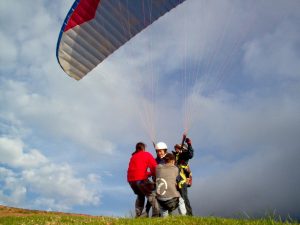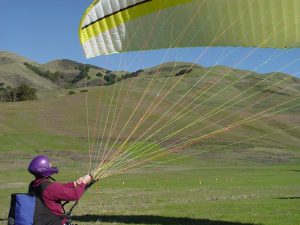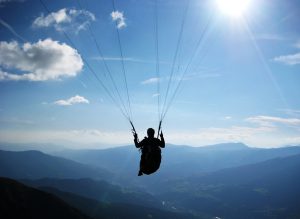 Paragliding is an exhilarating sport, and it’s one you might quickly get hooked on provided you don’t suffer from vertigo. There’s nothing quite like taking to the skies and seeing the world as a bird sees it.
Paragliding is an exhilarating sport, and it’s one you might quickly get hooked on provided you don’t suffer from vertigo. There’s nothing quite like taking to the skies and seeing the world as a bird sees it.
As an introduction to this adventure sport, it’s a good idea to book a tandem ride and then, if you enjoy that, invest in a course. Paragliding is at its most expensive in the early stages when you’re still learning and buying gear. But what gear do you need to buy?
The Essentials
Before laying out loads of money on equipment, make sure you are in good health and fit enough to take up this sport. You can chat with an NHS GP on a mobile device using kry to address any concerns you may have. Once you have the green light, you can start shopping for suitable gear.
There are plenty of things you can buy to enhance your experience as a paraglider, but first let’s focus on the essentials.
The Paraglider
The canopy that keeps you aloft is the chief purchase you’ll make when taking up paragliding. At  first, you’ll use someone else’s paraglider, but the sooner you get used to your own and learn how it handles, the better.
first, you’ll use someone else’s paraglider, but the sooner you get used to your own and learn how it handles, the better.
One of the vital things to consider when investing in a paraglider is your take-off weight. This is the combined weight of you and all the gear you’re taking up, which affects the size of paraglider wings you’ll need.
Typically, paragliders are also given EN or LTF ratings. Lower ratings (e.g. A or 1) are better for beginners, since they behave predictably and are stable. Paragliders that are made for competition are faster but less stable. These are aimed at expert pilots with more skill and experience at their command.
The Harness
Aside from the thing that keeps you aloft—the paraglider—the next most vital piece of equipment is the item that attaches you to the glider: the harness. Since paraglider pilots come in all shapes and sizes, so do their harnesses. This is something you really need to try on in a shop, just as you would a pair of shoes.
The Reserve Parachute
 On the off chance that something does go awry on a flight, you need a contingency plan. That plan comes in the form of an emergency reserve parachute. Again, these vary in design and cost. More expensive chutes are steerable, lightweight and extra-quick to deploy, which is not to say that cheaper ones are slow to open.
On the off chance that something does go awry on a flight, you need a contingency plan. That plan comes in the form of an emergency reserve parachute. Again, these vary in design and cost. More expensive chutes are steerable, lightweight and extra-quick to deploy, which is not to say that cheaper ones are slow to open.
Safety helmet
The last of the essentials is a paragliding safety helmet. There are two basic designs: open-face and full-face.
Other Bits
Once you’re kitted up with the essentials, of course there is other gear you can buy to enhance the paragliding experience. This includes a speed bar for flying farther and faster, a variometer and GPS and a flight deck to secure these instruments and other items.
